When creating a page/post from the WordPress admin dashboard, you are able to use the right sidebar to customize the page/post:

However, when you launch Thrive Architect and start editing the page/post from within our product, clicking on “Page” / “Post” in the breadcrumbs will also lead to some settings:
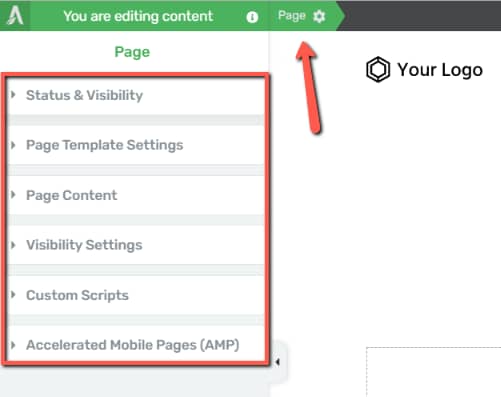
|
Note: The options from the left sidebar will only be available with Thrive Theme Builder installed and activated. |
The purpose of this tutorial is to clarify why some of these options can be found in both places, while some of them seem to be visible once, and then never to be found again.
When developing Thrive Architect, we wanted to include most of the options that are to be found in the WordPress editor inside our own, so that you will not have to keep switching in between editors.
For this reason, if you use Thrive Architect to create and customize your posts and pages, you will be able to find all of the visibility/publishing options inside our editor, by clicking on “Page”/”Post”/”Landing Page” in the breadcrumbs, as seen in the image above.
|
Note: We have created a separate article regarding the Landing Page settings, that you can check out here. |
Which options can I find in the WordPress editor and which ones can I find in the Thrive Architect one?
Here are the available options and where they can be found:
|
Name of the option |
Can it be found in the WordPress editor? |
Can it be found in the Thrive Architect editor? |
|
Status & Visibility |
yes 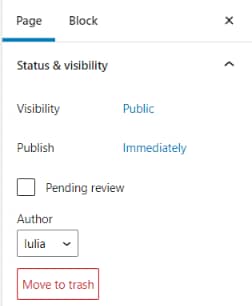 |
yes 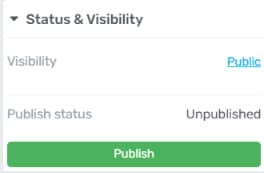 |
|
Thrive Theme Builder Template Settings |
yes*  *the “Theme Builder Templates” option will be visible in the WordPress settings only if you have not opened or edited the post using Thrive Architect. If the post has been opened in the Thrive Architect editor before, the template options will migrate there |
yes  |
|
Thrive Theme Builder Visibility Settings |
yes* 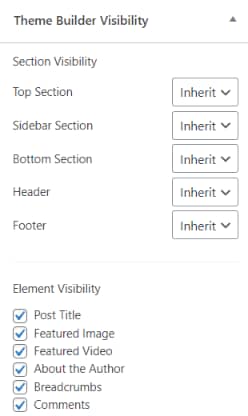 *the “Theme Builder Visibility” option will be visible in the WordPress settings only if you have not opened or edited the post using Thrive Architect. If the post has been opened in the Thrive Architect editor before, the template options will migrate there |
yes 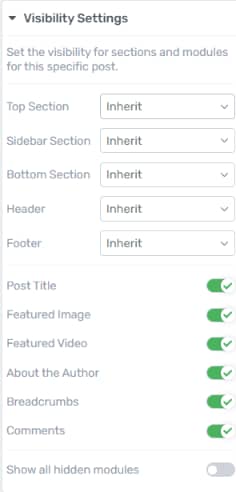 |
|
Page/Post Content |
yes, content can be written directly from within the WordPress editor |
yes, content can be written directly from within the Thrive Architect editor |
|
Page/Post Title |
yes, the title can be edited from the WordPress editor 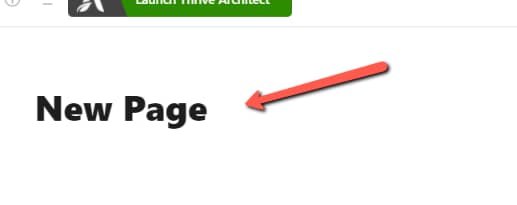 |
yes, the title can be edited from the Thrive Architect editor 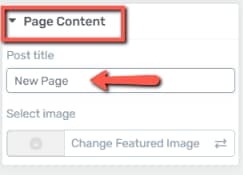 |
|
Featured Image |
yes 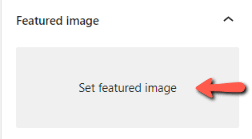 |
yes 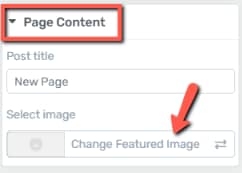 |
|
Custom Scripts |
yes 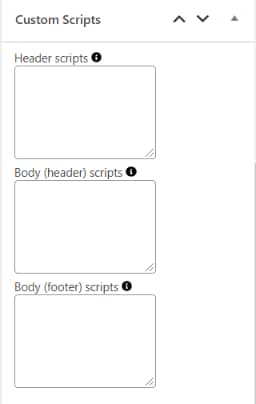 |
yes 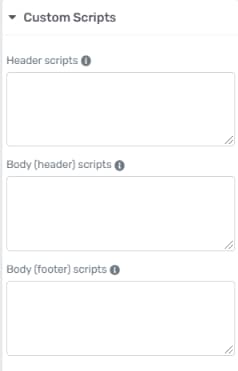 |
|
Permalink Structure |
yes |
no |
|
Discussion/Comments |
yes |
yes |
|
Page Attributes (parent pages) |
yes |
no
|
|
Accelerated Mobile Pages (AMP) |
yes* *the “Accelerated Mobile Pages” option will be visible in the WordPress settings only if you have not opened or edited the post using Thrive Architect. If the post has been opened in the Thrive Architect editor before, the option will migrate there |
yes |
|
Sections that cover settings from other plugins (e.g. Yoast SEO) |
yes |
no |
So, what do these options do, exactly?
-
Status & Visibility
This one allows you to change the status and visibility settings of the page:

Please check out this article for more information about this option. You are also able to change the publish status of a page/post (published/unpublished/draft).
-
Thrive Theme Builder Template Settings
This is where you can apply Thrive Theme Builder templates, whether that will be on a page or on a post.
The option will only be visible in the WordPress editor before switching to Thrive Architect. Once you do that, the Thrive Architect editor will be the only place where you will be able to find these options.
Please read these articles to find out more about applying templates in Thrive Theme Builder:
-
Thrive Theme Builder Visibility Settings
This option refers to the visibility settings of various sections of your Thrive Theme Builder templates. You can choose to show/hide different sections (“Header”/”Footer”/”Top”/”Bottom”/”Sidebar”/”Content”), as well as other parts of the template, like the featured image, breadcrumbs, title, comments, etc. :

The option will only be visible in the WordPress editor before switching to Thrive Architect. Once you do that, the Thrive Architect editor will be the only place where you will be able to find these options.
Read more about how to use these options here.
-
Page/Post Content
The content of the page/post you are editing can be added from both editors. If you’re using the WordPress one, the content can be written straight from there:

And if you’re using Thrive Architect, the easiest way to add content is by drag-and-dropping elements from the element list (the plus sign from the right sidebar). For writing content, you can use “Text” elements.
-
Page/Post Title
The title can be changed from both places. In the WordPress editor, you can simply click on the title and start editing it:

And in the Thrive Architect editor, you can go to the “Page Content” section of the left sidebar, and modify the “Post title” field:

-
Featured Image
The featured image can be modified from both places, as well. In the WordPress editor, you will find the “Featured Image” section:
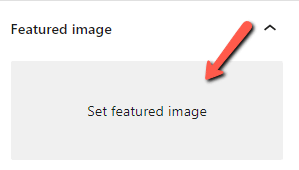
In our editor, the option can be found under the “Page Content” section:
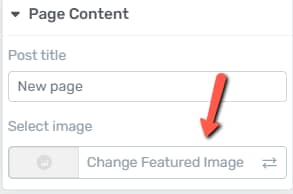
In both cases, the Media Library will open and you will be able to choose a featured image from there or to upload a new one.
-
Custom Scripts
Adding custom scripts can be done from within both editors. We have a separate, detailed article about how to do that, so please check it out here.
-
Permalink Structure
The structure of the permalink can only be changed from the WordPress editor:

-
Discussion/Comments
You can enable or disable comments from both places. In the WordPress editor, the option will be found in the “Discussion” section:
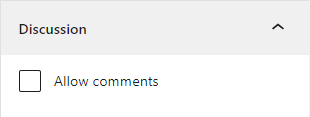
And in Thrive Architect, you can show/hide comments from the theme template settings, by activating/deactivating this option:

See more about comments on individual posts/pages here.
-
Other Sections & Options
Now, depending on what type of content you are editing, some options might be found in the WordPress editor only, and some of them in the Thrive Architect editor only:
-
Page Attributes
This option is only available for pages, and can only be found in the WordPress editor. You can use it to set up a parent page for the one that you are currently editing:

If you need more information about this section, please check out this article.
-
Tags, Categories and Excerpts
If you are editing posts in the WordPress editor, you will be able to add tags/categories, as well as create an excerpt for that post:
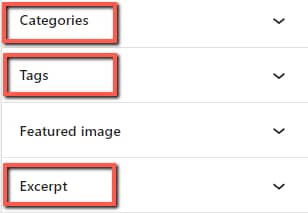
-
Accelerated Mobile Pages
Due to Thrive Theme Builder being active on your site, you will also be able to use the “Accelerated Mobile Pages” option.If you’ve enabled AMP from your Thrive Theme Builder settings, you have the option to locally disable it, on certain pages/posts.
In this case, too, you will be able to find the option in the WordPress editor until launching Thrive Architect, in the “Thrive Theme Builder Templates” section:

After that, the option will only be available in the Thrive Architect editor:
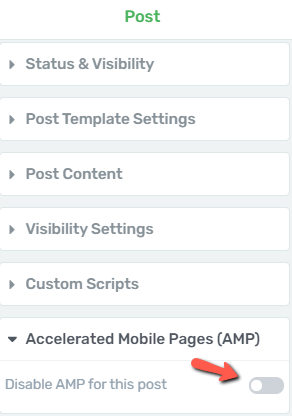
Read more about AMP in this article.
Sections generated by other plugins
There are plugins (including Thrive Themes plugins) that will also generate sections in the WordPress editor. Here are a few examples:
-
Yoast SEO
If you are using Yoast SEO as your Search Engine Optimization plugin, you will also see this section in your WordPress editor:
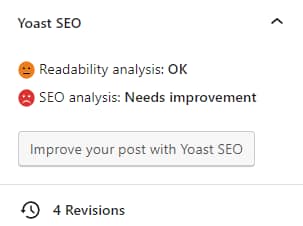
-
Thrive Headline Optimizer
Similarly, when using Thrive Headline Optimizer, you will get one extra section here, from where you can directly start testing your headlines:
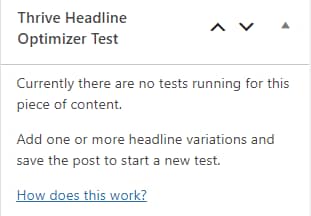
Please note that these are just examples of plugins and, depending on the way you are constructing your website, more or fewer options can be present in your WordPress editor.
-
Hopefully, this article was useful to you. If so, don’t forget to leave a smile below 😄